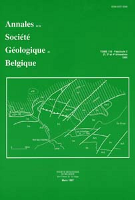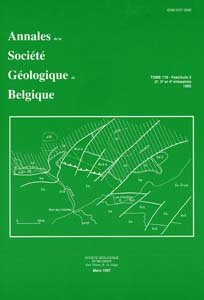- Accueil
- Publications spéciales = special publications
- L'évolution quaternaire des bassins fluviaux de la...
- L'évolution du bassin de l'Escaut
Visualisation(s): 774 (9 ULiège)
Téléchargement(s): 553 (13 ULiège)
L'évolution du bassin de l'Escaut

Abstract
In the Scheldt basin, that occupies an area of nearly 20 000 km2, the highest point reaches only 212 m. It has a high drainage density (fig. 1) and may be subdivided into three parts, each of which characterized by different types of drainage patterns and a different drainage net (fig. 2).
An inventory of the terrace levels of various portions of the main stream and of the most important tributaries has been made. The term "terrace level" is used in a broad sense including not only morphological valley- and interfluve terraces but also planation surfaces with pebbles, old depositional surfaces below the present floodplain and even inversed ancient beach gravels. For each of these terrace levels the extension, the characteristics of the deposit, the absolute and the relative elevation, are given. Also the correlation and chronology of the terrace levels of the various tributaries and of the main trunk have been attempted (fig. 3 and 4). For this purpose the authors have chosen the Scheldt and Lys basin downstream of Bellegem and the Flemish Valley (Pre-holocene outlet of the basin in the north of Ghent) as the reference trunk.
The authors have also attempted to give a picture of the evolution of the basin. This evolution has started long before the Diestian transgression (Upper-Miocene) in the southern part of the basin. However, most of the terrace levels that have been recognized are of Pleistocene age and are considered as climatic terraces. It is only in the Flemish Valley and its main tributaries that terrace deposits occur related to the sea-level rises of the Holstein, Eem and Flandrian transgressions. Furthermore, new data have been obtained concerning the genesis of the "Collines de Flandres", the formation of the Lys-Scheldt outlet of Bellegem (fig. 5), the evolution of the Flemish Valley (fig. 7) and the formation of the present outlet of the basin via Antwerp. The attempt at correlation of the terrace levels of the various basins allowed to propose an explanation for some particulars of the drainage net of the Scheldt river upstream of Ghent and the valley system Haine-Scarpe, Marque-Deûle, Hem-Yser (fig. 6).






